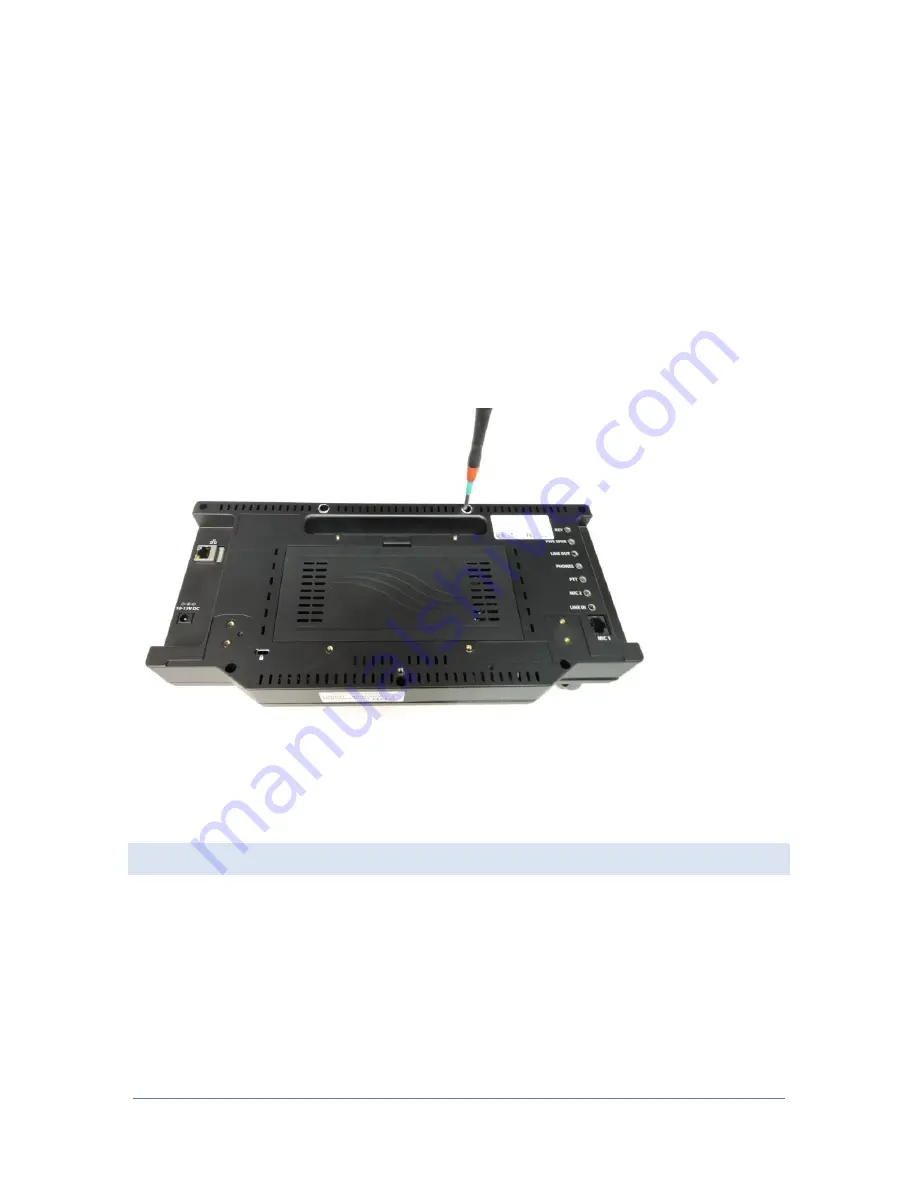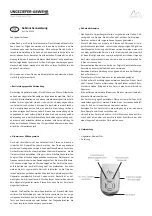
Page 7
© 2019 FlexRadio
Once the cables are oriented correctly, carefully close both halves of the Maestro chassis together
ensuring that none of the cables have been pinched.
This action must be done smoothly and without excessive pressure. If it does not fit together easily with a
snug fit, open again and check the position of the audio cable with the ferrite core.
Make sure that the Ethernet connector is oriented correctly so that it fits through the back chassis hole
properly.
When both halves of the Maestro chassis are in the proper position, they can be closed easily.
Check to make sure that the USB A connector end of the battery bank power cable is properly fed into the
battery bank compartment and did not slip back into the unit while closing both halves of the Maestro
chassis.
Replace all seven (7) screws on the Maestro rear chassis. Tighten snugly, but do not over tighten.
Using the #2 Phillips screwdriver, reinstall the tilt feet or the fixed tilt stand on the Maestro.
You can connect the battery bank to the USB connector and replace the battery compartment cover at
this time.
Final Maestro Battery Charging
NOTE: At this point, the internal display battery is not fully recharged.
The initial charging is done with the computer or Smartphone charger only provided enough charge to
enable the display to initialize the power charging logic of the display, so a complete charge is necessary.
Once the Maestro has been reassembled, to completely recharge the internal display battery requires
charging for several hours at a higher amperage using the supplied AC Power Adapter. When the AC
power adapter is connected to the Maestro, it will boot up. Press and release the power button to shut it
down during this last charge cycle. Allowing the Maestro to charge for six (6) to eight (8) hours is
recommended before using.

























